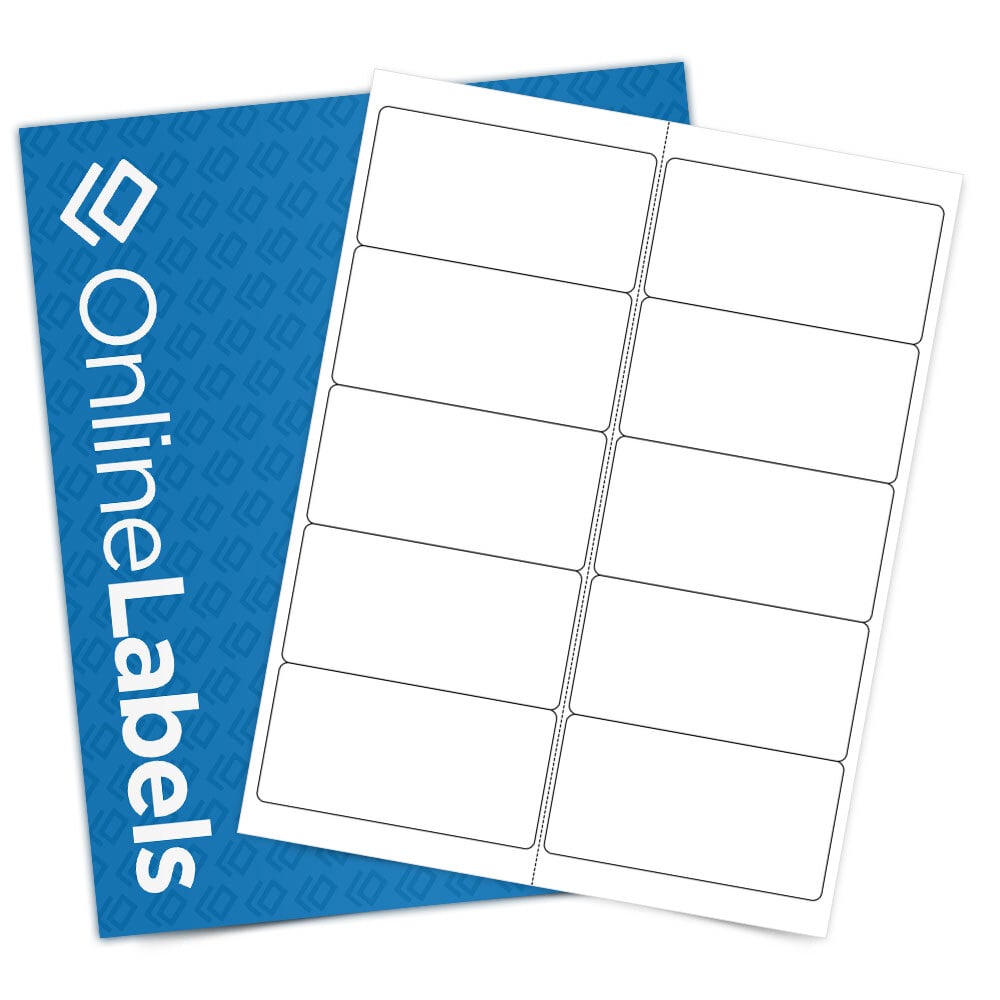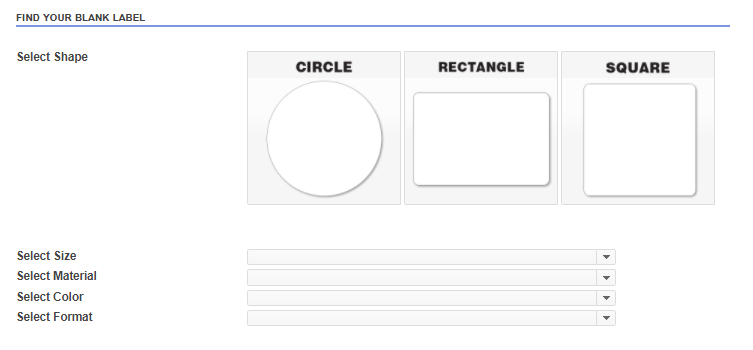Comprehending Exactly How Blank Labels Job to Enhance Your Labeling Experience
Recognizing the mechanics of blank labels is necessary for optimizing your labeling techniques throughout numerous contexts. To totally realize exactly how these labels can transform your procedures, one should think about the different types available and the myriad means they can be personalized to suit particular demands.

Advantages of Making Use Of Blank Labels
Blank labels offer a flexible remedy for different classifying needs, making them indispensable in both personal and professional settings. Their flexibility permits individuals to produce customized labels customized to specific demands, boosting organizational effectiveness. Whether utilized in office, retail atmospheres, or industrial applications, blank labels assist in the recognition and classification of items, files, and personal things.
One considerable advantage of blank labels is their cost-effectiveness. By permitting customers to print only the labels they require, waste is minimized, and stock monitoring becomes more manageable. Additionally, blank labels work with various printing methods, consisting of inkjet and laser printers, making them obtainable for different users.

In addition, using blank labels streamlines the process of updating information, as individuals can quickly publish brand-new labels to change obsolete ones, guaranteeing that all items and papers are precisely identified. In general, blank labels offer a functional and efficient labeling service for diverse applications.
Kinds of Blank Labels Available
What options are available when it concerns blank labels? Blank labels come in a selection of types, each matched for different applications and preferences. One of the most common types include paper labels, which are versatile and economical, making them ideal for everyday use. They are readily available in different finishes, such as matte and glossy, enabling aesthetic versatility.
An additional preferred option is synthetic labels, usually made from materials like polyester or plastic. These labels are understood for their toughness and resistance to water, chemicals, and tearing, making them appropriate for harsh settings. They are typically made use of in commercial settings or for labeling items that might be exposed to dampness.
Furthermore, there are thermal transfer labels, which require a printer that utilizes warmth to move ink onto the tag surface. These labels are preferred for their high-quality print and longevity.
Lastly, specialty labels satisfy specific demands, such as detachable labels for momentary usage or high-temperature labels for severe problems. Recognizing these alternatives permits users to choose the most ideal blank label for their one-of-a-kind labeling needs.
Customization Options for Labels
A large variety of customization options is readily available for labels, permitting individuals to customize them to specific needs and branding demands. Individuals can pick from numerous sizes, shapes, and materials to guarantee that the labels successfully fit their desired purpose. Typical materials include paper, polyester, and vinyl, each offering different levels of longevity and aesthetic appeal.
Shade choices play an essential duty in personalization, enabling brand names to keep uniformity with their business identification. Users can choose from a range of colors and even choose for customized printing to match specific branding aspects. In addition, labels can be printed with unique styles, logos, and message, enhancing brand name recognition and visual effect.
One more crucial facet is the selection of adhesive. Tags can be created with permanent, removable, or repositionable adhesives, depending on the application requirements. This adaptability enables effective labeling remedies throughout various atmospheres, from retail to commercial setups.

Tips for Effective Labeling
Efficient labeling goes beyond customization; it likewise entails strategic factors to consider that enhance capability and communication. To attain efficient labeling, begin by clearly specifying the purpose of each label.
Following, focus on presence by selecting ideal colors and typefaces. High contrast in between message and history improves readability, while bigger fonts assist in quick recognition. In read addition, make certain that labels are positioned in a constant and logical fashion, making it simpler for users to find and interpret details.
Take into consideration the toughness of labels. Select materials fit for the specific setting where the labels check out here will certainly be utilized, whether it be inside or outdoors. Water resistant or tear-resistant options may be necessary relying on the context.
Lastly, consistently testimonial and upgrade your labels to show any type of changes in info or usage. This positive strategy not just preserves clarity but also avoids complication in time. By complying with these tips, you can optimize the efficiency of your labeling efforts, ensuring they offer their desired objective effectively.
Applications of Blank Labels
Blank labels use various applications across various sectors, making them an important tool for company and communication. These flexible labels are typically used in stockrooms for stock monitoring, enabling organizations to easily recognize and track products. By using blank labels to storage bins, racks, or pallets, companies can simplify their operations and lower the chance of errors.
In the health care sector, blank labels play a critical role in labeling drugs and medical materials, ensuring proper identification and usage. Personalized labels can include crucial information such as dosage, expiration days, and client information, improving safety and conformity.
In retail, blank labels assist in rates products, giving promos, or identifying rack locations, which ultimately improves the customer experience. They enable quick updates to pricing or product details without the demand for pre-printed labels.
Furthermore, blank labels are advantageous for individual use, such as arranging office, crafting, or labeling food containers. Their versatility allows individuals to create tailored remedies that fulfill details requirements. Overall, the applications of blank labels are extensive, emphasizing their value in fostering performance and clarity in different settings.
Conclusion
In verdict, blank labels provide a versatile and efficient solution for various labeling demands. Their adaptability in size, shape, and product permits tailored applications across various settings. By leveraging personalization choices and effective labeling approaches, organizations can improve clarity and communication (Blank Labels). Ultimately, the integration of blank labels into operational procedures adds to enhanced performance, making them an invaluable source for both personal and check specialist use.